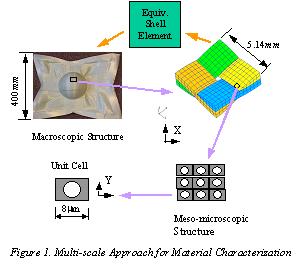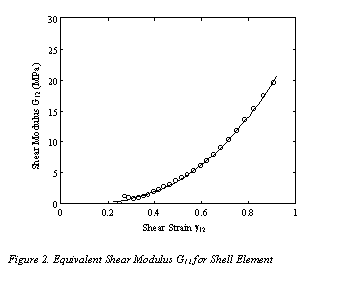The outstanding mechanical and physical properties of composites with continuous fiber reinforcement have increased the use of this material in structural applications in the aerospace and defense industries. Nevertheless, significant reductions in manufacturing costs are required to make structural composites attractive for mass production applications such as automotive components. This can be achieved through highly efficient stamping operations, which have proven their ability to produce metal products with very good structural integrity and quality.
However, there has not been a systematic study of the issues critical to using stamping for continuous fiber composites. In particular, this involves questions such as how to design the textile architecture for stamping, what kind of geometry can be formed, and what process parameters should be chosen to optimize product quality and minimize manufacturing cost. To address these issues, a research team has been formed consisting of Ford Scientific Research Laboratory, Northwestern University and University of Massachusetts - Lowell. A sample hemisphere is shown above. By integrating the advantages of the conventional finite element formulation and the homogenization method, we present a novel procedure for predicting the effective nonlinear elastic moduli of textile composites. These nonlinear effective moduli can be incorporated in a user material subroutine associated with shell elements in ABAQUS/Standard so that an efficient and accurate FEM simulation of composite sheet forming is feasible. First, based on the properties of the constituent phases, the homogenization method is employed to predict the effective elastic constants of the fiber yarn of the textile composites, which is regarded as a unidirectional composite. A unit cell is then built to enclose the characteristic periodic pattern in the textile composites. Using the unit cell, various numerical tests can be performed. By correlating the force versus displacement curves of the unit cell and a four-node shell element with the same outer size as the unit cell, the effective nonlinear mechanical stiffness tensor can be obtained numerically as functions of strain tensor. The entire approach is illustrated in Fig. 1. The obtained effective shear modulus versus shear strain for the shell element is shown in Fig. 2. Figure 3 shows the deformed shape of a square composite sheet in the FEM simulation with the obtained effective material properties.
In order for the composite material to be formed correctly in the stamping press, it must be heated to 300 deg C. This will be achieved by using the oven that we are designing and fabricating specially for this material and the stamping press. The material will be clamped inside the oven for support. Once the composite reaches 300 deg C, it will be transferred from the oven to the press on sliders that are controlled by a rod that extends outside the oven. As the press is lowered, the material will be released from the clamps so that it will conform freely to the shape of the press. The formed sheet then cools and is removed. A new composite sheet can then be clamped and sent back into the oven for heating.
During the forming process, the original orthogonal pattern between the weft and wrap yarns becomes non-orthogonal. As an improvement, a new constitutive model for characterizing the non-orthogonal material behavior under large deformation was proposed. The material model was implemented in a commercially available finite element package (ABAQUS/Standard) and was validated by several cases, i.e. the biaxial tension and the trellising shear frame test with the composite sheets misaligned by an off-angle. The predictions agree very well with the experimental data.
Sponsors:
National Science Foundation and Ford Motor Company




